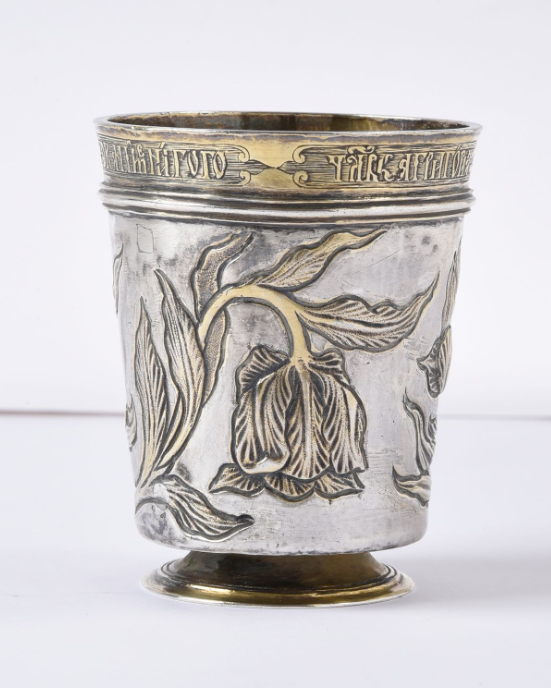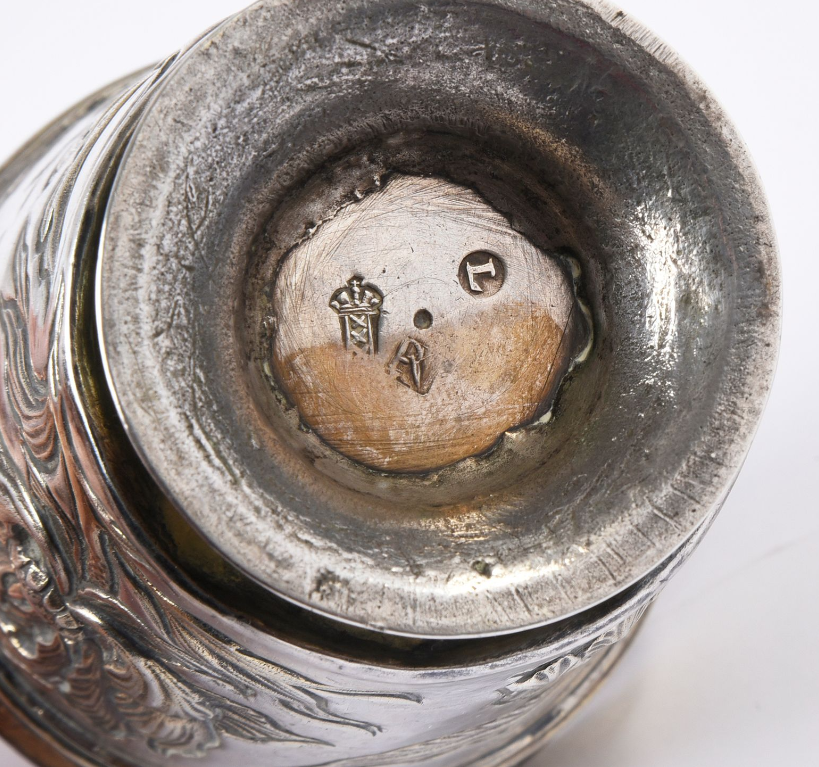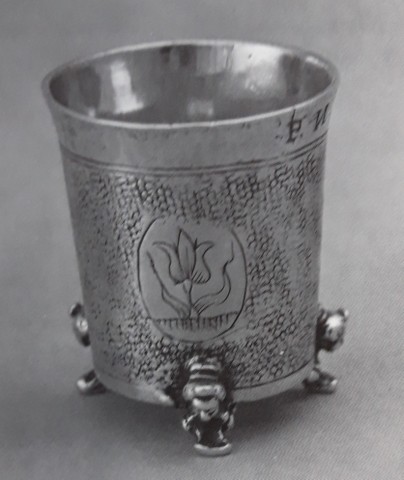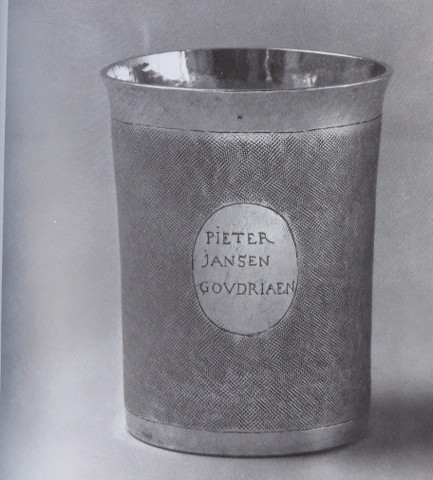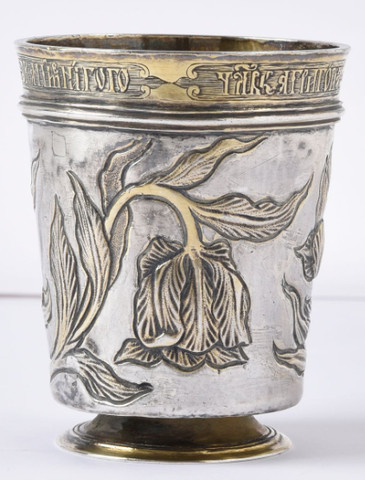
As a model, the cup differs from what was customary for silver drinking cups in the 16th and 17th centuries. This new shape with a separate foot is a development from the last quarter of the 17th century and was introduced under the influence of the court.
https://www.verenigingrembrandt.nl/nl/k ... er-op-voet
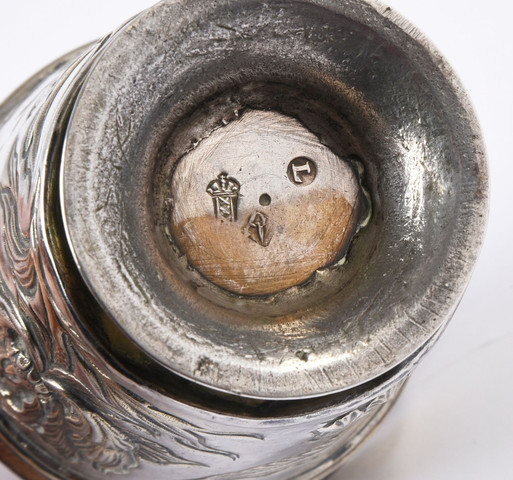 What is written in the book Goud en zilvermerken van Voet - L.B. Gans and Premsela & Hamburger; Authenticity questions. First look at the object itself and ask yourself the following questions: are there strange wear marks, do the marks belong to the object or have they been cast off and are we therefore dealing with a counterfeit? In the seventeenth and eighteenth centuries there were no Monday morning products in silversmithing. The blobs of solder we find around the bottom of a cup argue for authenticity rather than counterfeiting
What is written in the book Goud en zilvermerken van Voet - L.B. Gans and Premsela & Hamburger; Authenticity questions. First look at the object itself and ask yourself the following questions: are there strange wear marks, do the marks belong to the object or have they been cast off and are we therefore dealing with a counterfeit? In the seventeenth and eighteenth centuries there were no Monday morning products in silversmithing. The blobs of solder we find around the bottom of a cup argue for authenticity rather than counterfeiting
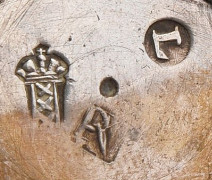
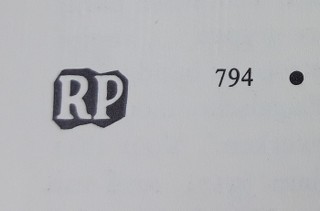 Maker's mark RP
Maker's mark RP for;
Roelof Pieter de Vries, 1655-1664,
born 1632 in the city of Emden (Oost Vriesland), reformed, son of Eilhart and Gretje Albertz, silversmith in 1655 and married in 1655 to Mayke van Sittert. Died in 1664. Crockery worker: hammered candlesticks, pitchers and dishes.
I see a few clear differences when I compare the master's mark on the bottom of your cup with the master's mark of Roelof Pieter de Vries as shown in the book; Amsterdamse Zilversmeden en hun Merken K.A. Citroen. I can't attribute the maker's mark on your cup to Roelof Pieter de Vries.
If I do a Google search to find any work of this silversmith nothing pops up. Could you please mention the name and place of the museum. Also an image of the marks on both beakers in de museum should be very helpful. Also please tell us about it provenance and some images of the complete inscription. Thanks for your cooperation.
For further research into the silver content of the cup and foot and the soldering used on cup and foot, a reliable essayist should be consulted.
Source; Amsterdamse Zilversmeden en hun Merken K.A. Citroen
Peter
